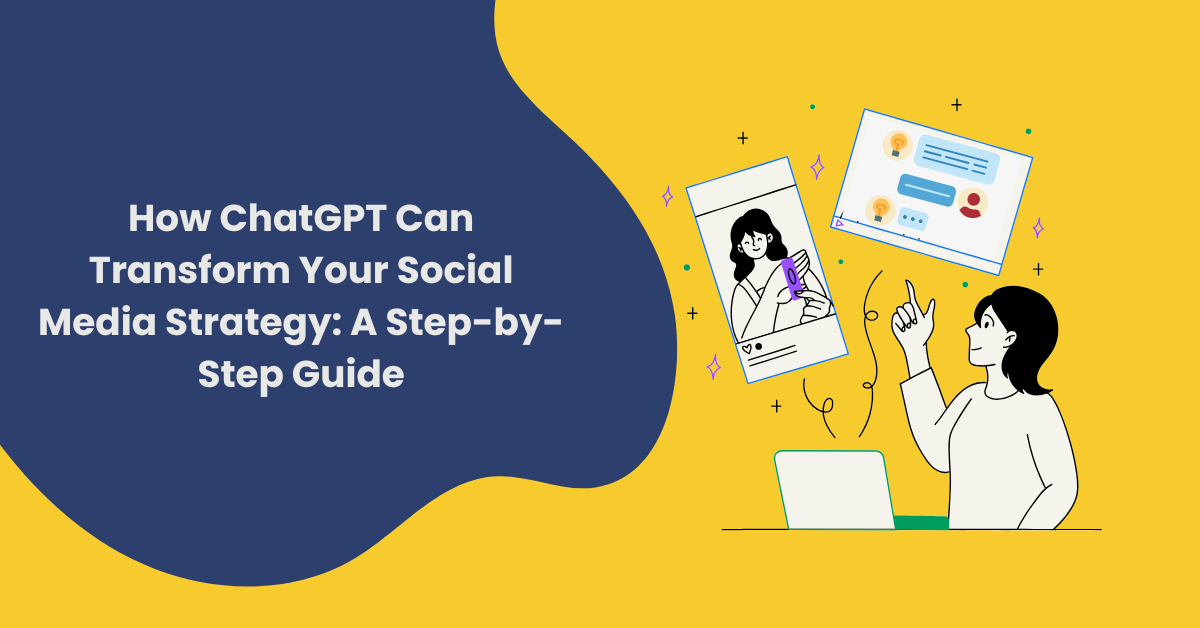How Can ChatGPT Be Effectively Integrated into Social Media Strategies
In today’s digital age, the dynamic landscape of social media requires innovative strategies to engage audiences meaningfully. As artificial intelligence (AI) continues to make strides, its integration into social media strategies is becoming essential for brands aiming to maintain a competitive edge. One such AI innovation is ChatGPT, a tool that’s reshaping user engagement, content creation, and customer interaction. This blog explores how ChatGPT can be effectively integrated into social media strategies to enhance efficiency and engagement.
Understanding ChatGPT
ChatGPT, developed by OpenAI, is a conversational AI model that uses machine learning to understand and generate human-like text responses. It’s based on the generative pre-trained transformer architecture and is capable of various applications ranging from answering queries to creating content and engaging in dialogue. By leveraging natural language processing capabilities, ChatGPT can simulate human conversation, making it a valuable asset for social media strategies. The integration of ChatGPT into social media can significantly transform how brands interact with their audiences.
The Role of AI in Social Media
The role of AI in social media has expanded rapidly in recent years, offering unprecedented opportunities for personalization and automation. AI tools provide marketers and brands with insights into consumer behavior, support in content development, and the ability to automate repetitive tasks. In social media, AI helps to tailor content, predict trends, and engage users more effectively. By understanding user preferences through data analysis, AI facilitates creating more relevant content that resonates with the audience. Moreover, AI-driven analytics can offer deeper insights into campaign performance, helping marketers to refine their strategies continuously.
Why Integrate ChatGPT into Social Media?
24/7 Customer Support
Integrating ChatGPT into social media platforms allows brands to offer round-the-clock customer support. Unlike human agents bound by working hours, ChatGPT can effectively respond to customer inquiries anytime, fostering continuous engagement and increased customer satisfaction. This 24/7 availability can handle basic inquiries, troubleshoot customer issues, and escalate complex problems to human employees when necessary.
Efficient Content Creation
Incorporating ChatGPT into your social media processes can enhance content generation efficiency. ChatGPT can assist in drafting posts, creating captions, and even brainstorming content ideas. Its ability to generate human-like text means it can produce engaging copy that resonates with audiences, thereby saving time and resources while maintaining a consistent posting schedule.
Enhanced User Engagement
By using ChatGPT, brands can foster deeper user engagement through interactive and personalized communication. It allows for real-time interaction tailored to individual user preferences, making customers feel valued and heard. This personalized communication can lead to increased brand loyalty and stronger customer relationships.
Data Collection and Analysis
ChatGPT can gather valuable user data and feedback during interactions, providing insights into consumer preferences and behaviors. This data is crucial for refining social media strategies and improving product offerings. By analyzing the data collected by ChatGPT, brands can make informed decisions and optimize their marketing efforts.
Steps to Integrate ChatGPT into Your Social Media Strategy
Step 1: Identify Goals
Begin by identifying specific objectives that you aim to achieve by integrating ChatGPT. These could be improving customer service, enhancing user engagement, or optimizing content creation. Clearly defined goals will guide the integration process and help measure success effectively.
Step 2: Choose the Right Platforms
Determine which social media platforms would benefit most from ChatGPT integration. Consider where your audience is most active and whether the platform supports the necessary technical features for integration. Popular platforms include Facebook, Twitter, and Instagram, each offering various integration possibilities.
Step 3: Customize ChatGPT Responses
To ensure effective communication, tailor ChatGPT’s responses to align with your brand’s voice and the specific needs of your audience. Customizing responses enhances user experience and ensures that communication remains on-brand and relevant to your audience.
Step 4: Implement and Monitor
Once set up, implement ChatGPT into your chosen platforms and monitor its performance. Use analytics tools to evaluate user interaction and engagement rates. Monitoring will help identify any areas of improvement and adjust the AI’s functionalities accordingly.
Step 5: Continuously Optimize
AI technology is ever-evolving, and regular updates or fine-tuning of ChatGPT integration can enhance its effectiveness. Keep abreast of new features and updates in AI technology to continuously improve your ChatGPT integration and social media strategy.
Case Studies and Examples
Several brands have already reaped the benefits of integrating ChatGPT into their social media strategies:
- Company A: Leveraged ChatGPT for customer support on their Facebook page, seeing a 30% increase in response times and an enhancement in customer satisfaction scores.
- Brand B: Used ChatGPT for generating Instagram captions and noticed a significant rise in user engagement through likes, shares, and comments.
- Organization C: Integrated ChatGPT to personalize direct messaging on Twitter, which resulted in improved customer feedback and a stronger community presence.
These examples demonstrate the diverse applications and tangible benefits of using ChatGPT within social media frameworks.
Best Practices for Using ChatGPT in Social Media
Optimizing the use of ChatGPT in social media involves several best practices. Firstly, maintaining a human touch is crucial; while ChatGPT can handle many interactions, it’s essential to provide opportunities for human intervention when necessary to tackle complex issues. Secondly, training ChatGPT with data relevant to your industry and audience enhances its ability to deliver personalized and contextually relevant responses. Lastly, remaining transparent with users about when they are interacting with AI versus a human can build trust and set the right expectations.
Challenges such as ensuring privacy and data security require careful consideration. Implementing robust security measures and compliance with data protection regulations is paramount to safeguarding user information and maintaining brand integrity.
Recapping the significance of ChatGPT integration into social media strategies, we see an innovative approach that can redefine how brands engage with customers. As AI technology continues to evolve, the potential applications and benefits of ChatGPT in social media will only expand. Embracing this technology not only streamlines operations but also offers unparalleled opportunities for deepening customer relationships and strengthening brand presence in the digital ecosystem.
In conclusion, integrating ChatGPT into social media strategies presents a forward-thinking approach to digital marketing. Brands that leverage this technology can expect to see enhanced customer interactions and content efficiency, paving the way for a more engaging online presence. As you explore AI integration further, consider experimenting with ChatGPT to unlock new dimensions of digital engagement and innovation.
We’d love to hear from you! What are your thoughts or experiences with ChatGPT in social media? Share your insights in the comments below and join the conversation. Don’t forget to share this post with your network to spread the knowledge!





